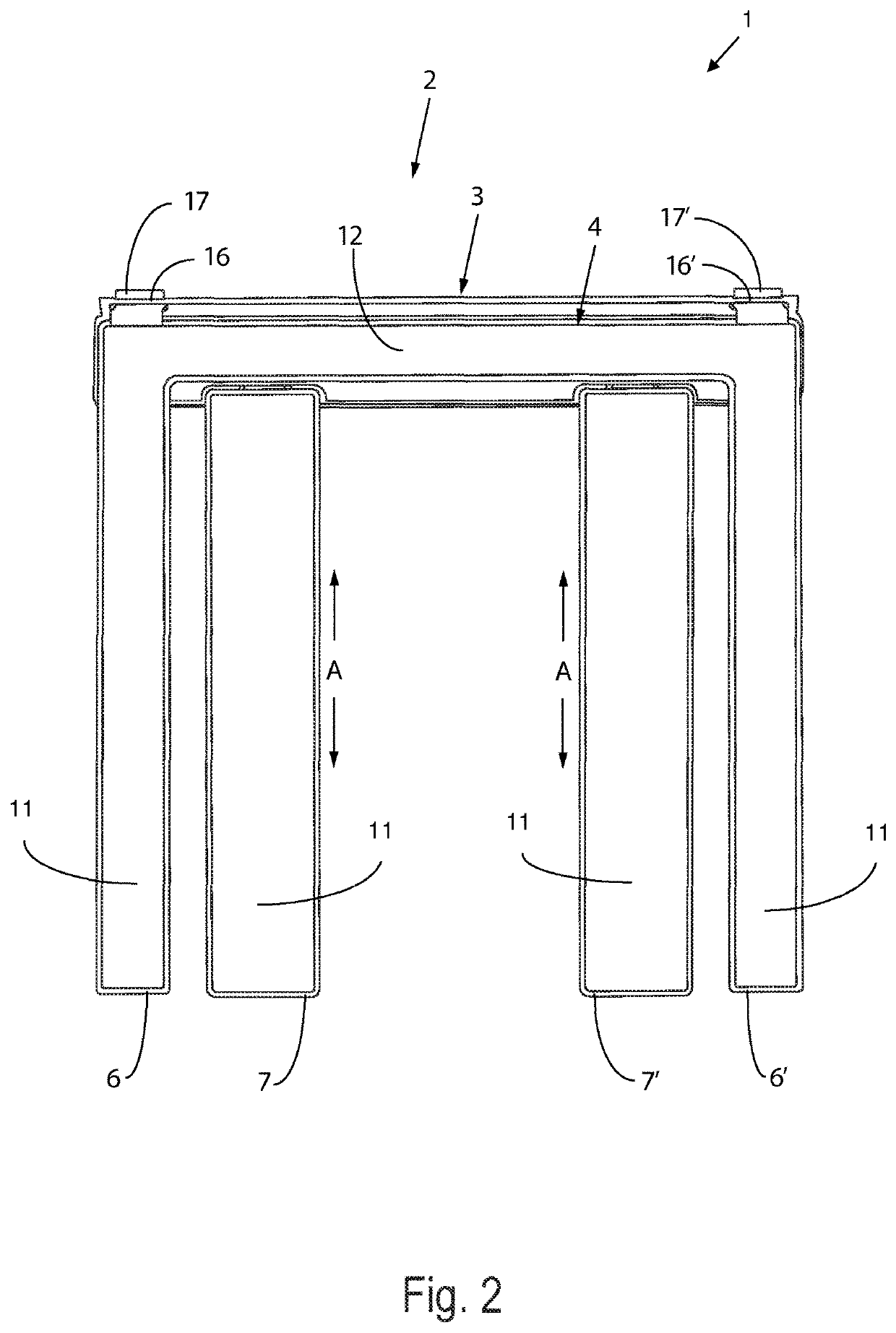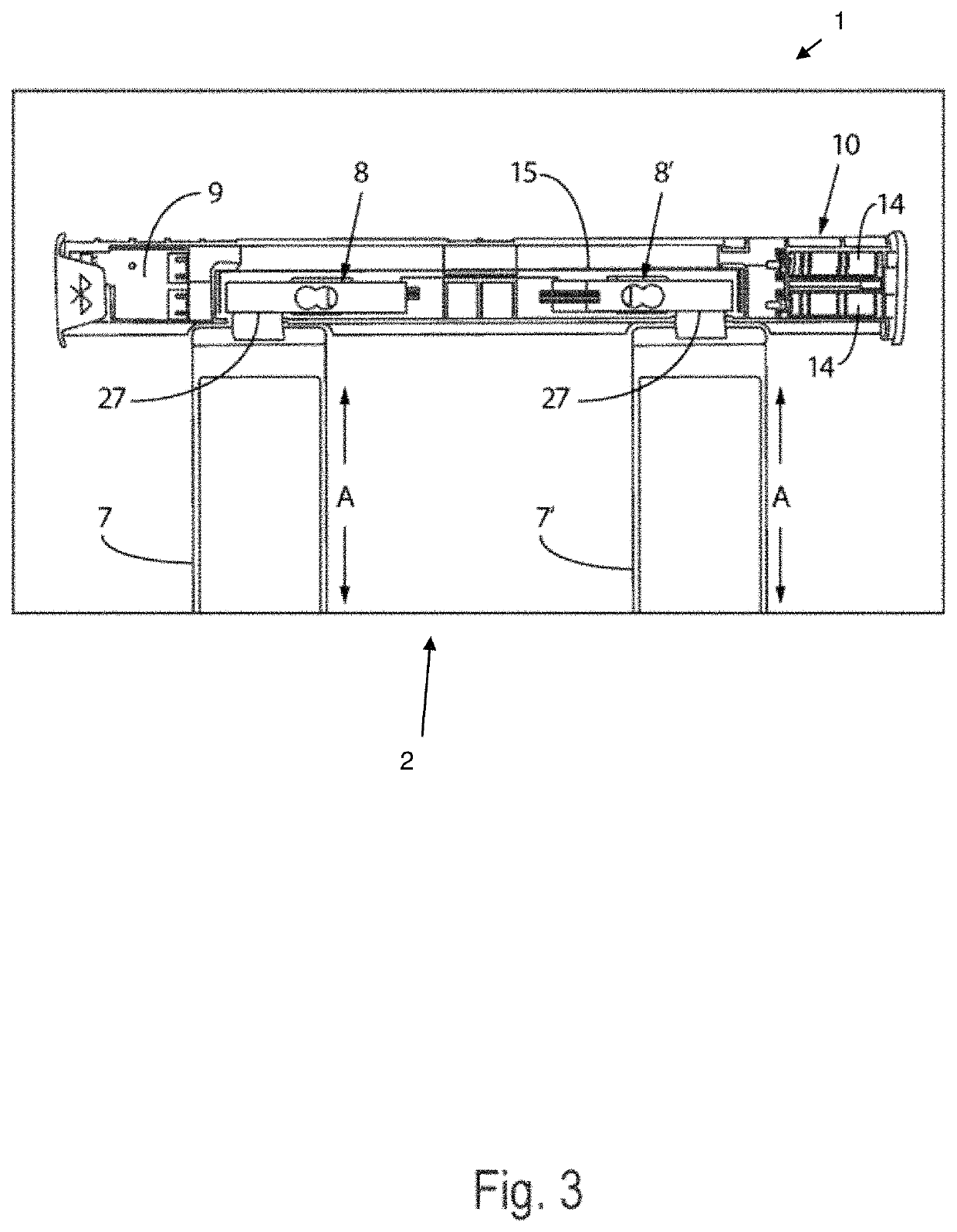Method, device, and product for measurement of shear force associated with a seating surface
a technology of shear force and seating surface, which is applied in the direction of wheelchairs/patient conveyances, seating arrangements, instruments, etc., can solve the problems of many people who experience symptoms that cannot recognize shear forces and cannot communicate with others, so as to reduce the problems of shear forces, reduce the problem and reduce the effect of horizontal shear forces
- Summary
- Abstract
- Description
- Claims
- Application Information
AI Technical Summary
Benefits of technology
Problems solved by technology
Method used
Image
Examples
Embodiment Construction
[0042]A preferred embodiment (FIG. 1-FIG. 7) relates to a shear force measuring device 1 comprising a frame 2 and shear force receiving means 5 extending perpendicularly from a base element 3 of the frame 2. The base element 3 is a transverse elongate element provided for placing along the rear side of the seating surface of the seat. Present in the frame 2 are two sensors 8, 8′ to which the respective shear force receiving means 7, 7′ are coupled. Shear force receiving means 7, 7′ are movable in the direction of arrows A.
[0043]Arranged in addition to sensors 8, 8′ in base element 3 of the frame 2 is an energy source 10 in the form of two batteries 14. This energy source 10 powers control unit 9 and, by means of this latter, the sensors 8, 8′. Control unit 9 comprises a processing unit and memory for processing and storing measurements performed by sensors 8, 8′. These sensors 8, 8′ are each load cells which are mounted on the sides facing toward each other on support bracket 15 whi...
PUM
| Property | Measurement | Unit |
|---|---|---|
| time duration | aaaaa | aaaaa |
| time duration | aaaaa | aaaaa |
| time duration | aaaaa | aaaaa |
Abstract
Description
Claims
Application Information
 Login to View More
Login to View More - R&D
- Intellectual Property
- Life Sciences
- Materials
- Tech Scout
- Unparalleled Data Quality
- Higher Quality Content
- 60% Fewer Hallucinations
Browse by: Latest US Patents, China's latest patents, Technical Efficacy Thesaurus, Application Domain, Technology Topic, Popular Technical Reports.
© 2025 PatSnap. All rights reserved.Legal|Privacy policy|Modern Slavery Act Transparency Statement|Sitemap|About US| Contact US: help@patsnap.com



